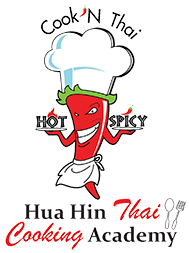
Eating Thai Food the Right Way
Eating Thai food with non-Thais always reminds me how different our eating habits are. Although you’re probably not going to offend anybody by holding your spoon the wrong way or taking to much yam wun sen, understanding how Thai people eat will undoubtedly smooth your way and maybe even provide a greater understanding of the food and people. And chicks love it. So here are a few tips on how to eat like the Thais do:
1. Order a balance of dishes. I know you all want to eat phat thai, but it’s actually a jaan diaow, a one-plate meal typically enjoyed by one person eating alone. When eating with others, try to order dishes that everybody can share (i.e. virtually everything except phat thai or any other noodle dish). Also, try to order a good balance of dishes. Ordering four coconut milk-based curries is a bad idea you’ll almost certainly regret later. I always try to order one fried vegetable dish, one sour soup and one uncooked dish, perhaps a yam (Thai-style salad), or a naam phrik (chili dip). Throw in a grilled or deep-fried fish and you’ve got yourself a phat meal. This is very easy to do in most restaurants, and allows you to truly sample the variety of Thai cooking.
2. Always eat your food with rice. Growing up, I recall my family ordering Chinese food and how the rice would always end up unopened, in its white container, until, several months later, it solidified and went sour and was eventually thrown away. Needless to say, I don’t do this any more. In fact, I can’t even imagine eating a spicy kaeng som or a phat fai daeng without rice. In Thailand, rice is the ‘base’ of the meal, much like bread elsewhere. And since the flavours of Thai cooking are so strong, you’re going to want something to tone it down a bit anyway. There are many Thais who, in leaner times, have had little more to eat than a plate of rice and maybe a splash of fish sauce, but you’ll find very few, if any, who have ever scarfed down a bowl of kaeng phet sans riz.
3. Dishes are shared. This is one concept that foreigners seem to have a particularly difficult time with. If you dine with Thais, they’ll ask you to order one or two dishes that you fancy. However, when these dishes arrive, they are no longer ‘your’ dishes to horde, rather they belong to everybody. On the same note, when serving yourself, you are expected to take one bite at a time, not one serving, from the central dish. Scraping a huge pile of food onto your rice can be seen as greedy here. And there are no ‘courses’ per se in Thai food, so eat everything as it comes.
4. Use a fork and spoon. This is another big difference that has a couple dimensions. When dining informally, or with close friends, there often won’t be any serving spoons. Thais use the same spoon they’ve just shoved into their mouth to pick food from the central dish. This seemed very, very odd to me at first, but is just the way things are done here. And for those who are unsure about the mechanics of the fork and spoon, here’s how it’s done: with your right hand, use your spoon (or the communal spoon, if one is provided) to take the equivalent of one bite of food from the central dish. Put this directly on top of some of the rice on your plate. Holding the fork in your left hand, use it to push the now food-drenched mound of rice back onto your spoon. Shove the spoon in your gob. Repeat.
5. Tipping is not necessary or even expected in Thailand, but it sure is nice. The people who serve you your food in Thailand probably work 12 hours a day, six days a week, and earn very little. When paying, Thai diners typically leave their coin change, not so much as a tip, but more to avoid looking cheap. I try to leave 20 baht or so to look wealthy. Chicks love it.

